A horse's auction price is not a reliable indicator of future racing ability, but when price is considered in aggregate among stakes-quality performers then class does tell.
An analysis by BloodHorse MarketWatch of American classic starters by their auction histories shows the clearest trend of racing quality versus price among the horses that sold as yearlings.
The majority of classic winners over the past 35 years have been sale horses. From 1989-2023 there have been 86 individual Triple Crown race winners, with 63% successfully passing through a sale ring at least once prior to their classic win. That is consistent with the overall proportion of sale horses in the classic fields, with 62% of both classic starters and top-three finishers selling at public auction ahead of their sophomore seasons.
Yearling Sales and the Classics
Unsurprisingly considering the market share, the yearling market is the most popular source of classic starters. Of the 54 unique classic winners that were offered and sold at public auction, 87% (47) sold as yearlings. Eighteen sold as either weanlings or 2-year-olds, but 11 of those also sold as yearlings. Unbridled is the only classic winner in our study population to be solely purchased as a weanling, while 2016 Kentucky Derby (G1) winner Nyquist holds the distinction of the only one sold as a weanling, yearling, and 2-year-old.
A steadily rising share of the North American foal crop has been finding its way to auctions as yearlings. For the 1999 crop, 31% were offered at a yearling sale in the summer or fall of 2000. The yearlings offered in 2023, by comparison, represented 45% of their crop. These percentages are slightly inflated because the number offered includes horses that go through multiple sales, which could be around 3%-4% of the crop based on pinhook reports for 2023.
The classic starters during 1989-2023 included 588 unique horses that were offered a total of 619 times as sale yearlings and accounted for 521 purchases averaging $245,030. Of these that eventually finished in the top three in a classic race, they averaged $287,918. The classic winners apparently showed more quality than their peers as their $398,896 average indicates. The average price for winners does include Belmont Stakes (G1) winner Da' Tara, who sold twice as a yearling, selling first as a short yearling during the 2006 Keeneland January Horses of All Ages Sale for $100,000. If only Da' Tara's sale price of $175,000 during the Fasig-Tipton Saratoga sale is considered, the average yearling price of classic winners rises to $405,255.
The charts with this story illustrate the distribution of sale horses by hip type since 1989 in the fields and trifectas of American classic races. The proportion of yearlings represented in the top three has been particularly strong since 2012, with nearly all classic-placing sale horses selling as yearlings. In 2012, all seven of the in-the-money finishers of the Kentucky Derby, Preakness Stakes (G1), and Belmont Stakes sold as yearlings, including dual classic winner I'll Have Another, an $11,000 purchase at the 2010 Keeneland September Yearling Sale, and Belmont winner Union Rags , a $145,000 purchase at The Saratoga Sale, Fasig-Tipton's select yearling auction in New York.
The trend across the weanling averages for classic contenders, top-three finishers, and winners is relatively flat, while the 2-year-old sales show contenders selling for more on average than winners. The average 2-year-old price for classic starters is $245,472, the average for top-three finishers is $219,513, and average for winners at $209,325. The premium placed on raw speed at the 2-year-olds in training sales is likely the reason for this inverse trend compared with yearling averages. Juveniles working in under :10 are attracting the most attention. At the recent Ocala Breeders' March 2-Year-Olds in Training Sale, horses working in :09.3-:09.4 averaged $416,976 compared with the sale's overall average of $147,209. The horses working the fastest times also included three of the five seven-figure purchases.
Increasing Representation of Sale Horses
The 15 classic races run since the 2018 Triple Crown swept by Justify have produced 15 individual winners. Of those winners, eight were successfully sold through an auction ring as either a weanling, yearling, or 2-year-old.
Last year's Triple Crown races were won by three different sales graduates: Mage , a $235,000 Keeneland September Yearling Sale and $290,000 Fasig-Tipton Midlantic 2-Year-Olds in Training Sale purchase, won the first leg; National Treasure, a $500,000 yearling at The Saratoga Sale, Fasig-Tipton's select yearling sale, won the Preakness Stakes; and Arcangelo , a now-famous bargain buy at $35,000 from Keeneland September, won the final jewel.
The distribution for sale horses seems to get more favorable as the Triple Crown series progresses. For the Kentucky Derby, 60% of the winners and 62% in-the-money finishers sold at public auction. The Preakness has been won 63% of the time by sale horses, with 64% top-three finishers also selling at auction. In the more recent past, auction buys have been particularly dominant in the second leg of the Triple Crown with just two homebred winners in the last 10 years: California Chrome (2014) and Rombauer (2021).
The Belmont, however, is where the sale horses seem to really out-perform their proportions. While 59% of Belmont starters since 1989 were sold at auction, 71% of the winners were sale horses. There have been 10 homebred Belmont winners since 1989, but just four have won in the past 15 years.







